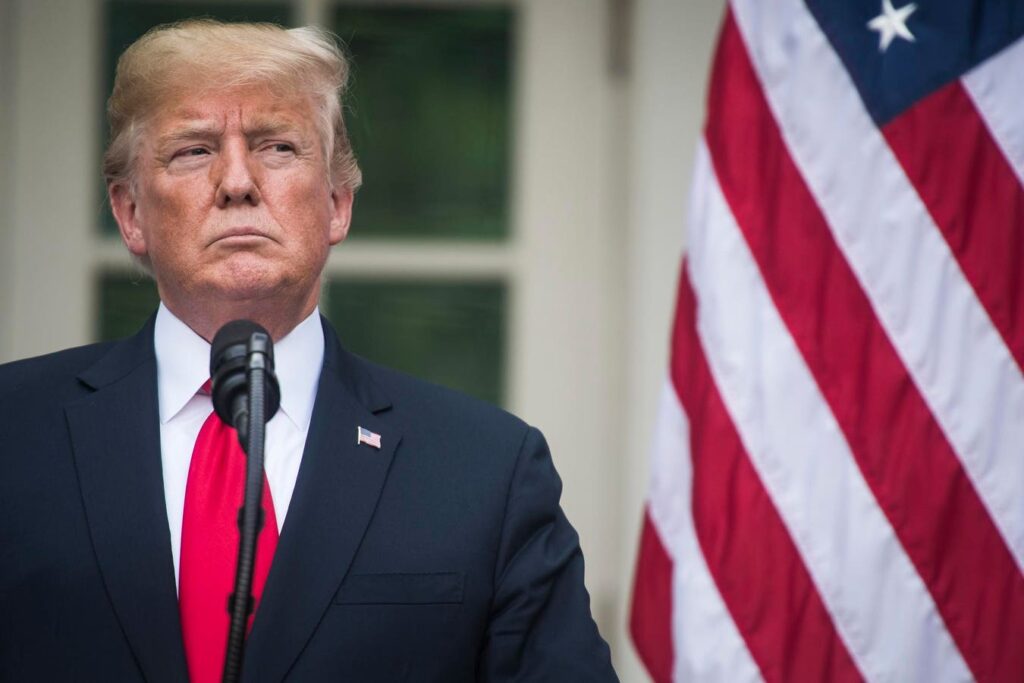President Donald J. Trump just threatened to put 50% tariffs on EU goods.
The Washington Post via Getty ImagesPresident Trump is threatening to impose 50% tariffs on the European Union effective June 1st, after complaining that trade talks are stalling. The announcement caused another drop in European stock prices, with french index CAC40 down 3%, also hitting LVMH’s shares directly, down 8% since the announcement.
The U.S. Is A Crucial Market For The Luxury Industry
This news isn’t helping the luxury industry, as it is being hit from all angles. Its biggest players are European, and their key market is none other than the U.S. According to a report by McKinsey, the U.S. luxury market is expected to grow more than any other regions, at a 4-6% growth rate, representing a strategic area for luxury brands. In 2024, the U.S. was LVMH’s third biggest market, responsible for 25% of the group’s total revenue, and a key geography for growth. Tariffs would inevitably hurt the group’s activity in the U.S. as it will likely have no choice but to raise prices. Louis Vuitton, one of its main brands, has already raised the price of one of its bags by nearly 5% a few weeks ago.
Hermès has also announced it will raise its prices to offset tariffs, a move that will most likely be taken by most European luxury players selling in the U.S. These price increases will directly impact consumer spending, with American customers thinking twice before purchasing leather goods from European brands. But there’s not much these brands can do given their need to protect margins. And with these brands’ production facilities mostly located in France and Europe, there aren’t many other solutions. This market dynamic comes at an unfortunate time for LVMH and other groups, many of which are already witnessing a decline in revenue from the U.S. market: LVMH posted a -3% revenue decline for the first quarter of 2025.
The Wine and Spirits Industry Also In Turmoil
The U.S. and the European Union are facing an alcohol tariff-war since the start of the year, with Europe threatening to tax American Bourbon (before deciding against it later on), while Trump previously threatened to impose a 200% tariff on European spirits and wine coming to the U.S. While this 50% current figure is much lower, it still represents a serious blow to the industry, which is already facing a variety of unfavorable market dynamics.
European alcohol represents 17% of total alcohol consumed in the U.S., making the region a strategic market for European alcohol players. 32% of European alcohol is sold and sent to the U.S., a figure that will most likely drop if these tariffs are implemented. This will directly harm producers of wine, champagne and spirits, who are already facing challenges. The global wine consumption fell to the lowest it has ever been in 60 years, with a 3% decline in 2024. Inflation, market uncertainty and a shifting consumer behavior towards mindful drinking are directly affecting demand for wine, which is being felt by wine producers and also extends to other types of alcohol. LVMH reported a decline in sales volume for champagne and cognac for 2024, with overall wines and spirits revenues down 9% for Q1 2025.
‘The key shift in the last few years has been a downturn in the major growth markets, particularly USA and China, on top of stable or declining consumption in the traditional wine countries,” shared International Organisation of Vine and Wine (OIV) director John Barker with Decanter.com.
With the U.S. representing such a large market for European luxury and drinks players, all eyes are on how they will react, most notably LVMH. The group’s founder and CEO Bernard Arnault might use his ties with President Trump to strike a deal, frustrated at EU’s way of engaging in negotiations. According to the FT, the CEO told a French parliamentary on Wednesday, May 21st: “The United States is the world’s largest market, and it is very important to reach an agreement with the US for Europe. So far, things seem to me to be off to a relatively bad start”.
No need to imagine what he must be thinking now.
Read the full article here


